Shedding is a natural process for cats. It is a way to regulate their body temperature and replace old or damaged hair. The amount of shedding can vary depending on the breed. However, if you find yourself constantly cleaning up excessive cat hair or notice bald patches on your feline friend, it might be a sign that something else is going on.
- Seasonal changes influence cat shedding cycles, with variations between indoor and outdoor cats.
- Nutritional deficiencies can lead to increased shedding, highlighting the importance of a balanced diet.
- Stress and anxiety can cause cats to shed more, often requiring environmental or lifestyle adjustments.
- Parasites like fleas and mites are common culprits of excessive shedding and skin irritation in cats.
Read on to know the potential reasons behind excessive shedding in cats and what you can do to manage it.
The information provided herein is for informational purposes only. Please refer to our disclaimer for more details..
- 1. Natural/Seasonal Cat Shedding
- 2. Nutritional Deficiencies
- 3. Stress and Anxiety
- 4. Parasites
- 5. Allergies
- 6. Skin Conditions
- 7. Age-Related Shedding
- 8. Hormonal Imbalances
- 9. Underlying Medical Conditions
- How To Prevent Increased Shedding in Cats
- FAQs on Why Is My Cat Shedding Too Much
- Are there breeds of cats less prone to shedding?
- How often should I brush my longhaired cat?
- How can I tell if my cat’s shedding is normal or excessive?
- My longhaired cat has developed mats in its fur. Is it okay to shave my cat to make grooming easier?
- Are there any home remedies to help reduce cat excessive shedding?
1. Natural/Seasonal Cat Shedding
Cats evolved to shed their coats in response to changing seasons and daylight hours. In the spring, they shed their dense winter undercoat to stay cool as temperatures warm. When fall arrives, they shed lighter summer fur in preparation for the thicker coat that will insulate them during the winter. This is why you may see some cats develop a thicker winter coat.
Indoor cats shed more steadily throughout the year due to artificial lighting and more consistent temperatures. However, they still experience some seasonal variation. Outdoor cats will likely have more defined shedding periods in line with the natural changes in seasons.
If you have longhaired cat breeds like Persians, Himalayans, and Maine Coons they naturally shed more than short-haired cats like Siamese or Sphynx. Also, double-coated breeds have dramatic shedding periods during seasonal changes.
2. Nutritional Deficiencies
A healthy coat starts with a healthy diet. Just like our own hair needs good nutrition so does your cat’s fur. If your cat’s diet lacks essential nutrients like high-quality protein and fatty acids (especially Omega-3 and omega-6 fatty acids), it can lead to a dull, brittle coat and increased shedding.
Think of it like this: if you don’t eat enough fruits and vegetables, your skin and hair may suffer. It’s a similar concept for our feline friends for their coats and skin. If you suspect your cat’s diet might be a contributing factor, consulting with your veterinarian about appropriate food choices or potential supplements can help get their skin and coat health back on track.
Sometimes, the issue isn’t the food itself, but your cat’s ability to absorb nutrients. Health problems affecting digestion can create deficiencies even if the food is top-quality.
3. Stress and Anxiety
Cats are sensitive creatures, and their fur can often reflect their emotional state. Just like we might bite our nails when nervous, cats sometimes over-groom or may shed more when stressed or anxious.
Think about if something has changed in your cat’s world lately. Did you move to a new home? Introduce a new pet or family member? Even a change in your own work schedule can sometimes throw a cat off balance. Other common stressors include vet visits, loud noises (like fireworks), or conflicts with other cats in the household.
Stress-induced shedding may stop once the source of anxiety passes. But if you notice your cat continues to excessively groom or seems unusually on edge, it’s good to talk to your vet to get to the root of the issue.
4. Parasites
Fleas, mites, lice, and other external parasites can cause intense itching and skin irritation in cats. The scratching and biting to relieve the discomfort can lead to loose hair around the irritated area and sometimes widespread skin damage.
Many cats are allergic to flea saliva. Even a few flea bites can trigger a severe allergic reaction leading to significant skin inflammation and too much hair loss. This condition is called flea allergy dermatitis.
Types of Mites
Ear mites, mange mites, and other microscopic parasites can irritate a cat’s skin and cause hair loss. Mites might not be immediately visible to the naked eye.
I’ve seen several cases where seemingly healthy cats were shedding excessively, and it turned out fleas were the culprit – even for indoor-only pets! It emphasizes the importance of year-round parasite prevention.
5. Allergies
Cats can develop allergies to a variety of substances, leading to skin problems and excessive shedding. Common allergies include:
- Food allergies: Proteins in your cat’s food, such as beef, chicken, or fish, can trigger allergic reactions.
- Environmental allergies: Dust mites, pollen, mold, and other airborne substances can cause sensitivities.
- Flea allergies: Even a small number of flea bites can set off an intense allergic reaction in some cats.
Determining the cause of a cat’s allergy will typically involve a veterinary consultation. Your vet may recommend elimination diets, allergy testing, or environmental changes to pinpoint the allergen. Treatment mainly focuses on avoiding allergies and managing symptoms. That often includes special diets, anti-itch medications, or immunotherapy.
6. Skin Conditions
Skin infections caused by bacteria or fungi can disrupt normal hair growth and cause shedding.
Bacterial infections often lead to pustules, crusting, and localized hair loss. And, ringworm a highly contagious fungal infection (not an actual worm) that typically causes circular areas of hair loss with scaling and inflammation. Ringworm is zoonotic, meaning it can be transmitted to humans.
Other Skin Conditions
Various skin conditions can affect hair growth in cats. These may include:
- Feline acne: Blackheads and pimples on the chin, potentially causing some hair loss.
- Demodex mites: While less common in cats compared to dogs, this type of mite can cause hair loss.
- Autoimmune skin diseases: Rare but can have hair loss as a symptom.
Skin conditions require a veterinary diagnosis to determine the specific cause. Treatment usually involves topical or oral medications, medicated shampoos, or addressing the underlying cause for skin problems.
7. Age-Related Shedding
As our feline companions age, their bodies naturally change. They may develop conditions like arthritis, which affects their mobility and makes thorough cat grooming a challenge. Older cats might not reach certain areas as easily, leading to tangled fur and increased shedding. Additionally, their metabolism can slow down, sometimes affecting the quality of their coat.
Helping your senior cat manage shedding becomes even more important as they age.
Here’s how you can help:
- Regular grooming sessions are key, but be extra gentle with a senior cat. Choose soft-bristle brushes and take your time.
- Matted fur pulls and irritates the skin, increasing shedding. Check often, especially in areas like the armpits and behind the ears.
8. Hormonal Imbalances
Hormonal disorders can significantly impact a cat’s hair growth cycle such as Hyperthyroidism (overactive thyroid) a common condition in older cats in which there is more production of thyroid hormones. This hormonal imbalance accelerates metabolism and can lead to a sparse, brittle coat and excessive shedding.
Another one is Cushing’s Disease (hyperadrenocorticism), In this condition, cortisol production increases. Skin symptoms like symmetrical hair loss, thin skin, and easy bruising are common in affected cats.
9. Underlying Medical Conditions
While excessive shedding is not the primary sign for most medical conditions, it can be a secondary symptom that develops alongside more prominent indicators. Some diseases in which shedding can occur include kidney diseases, liver disease and certain types of cancers.
How To Prevent Increased Shedding in Cats
While some level of shedding is completely normal for cats, there are things we can do as pet owners to help minimize it and keep their coats healthy:
- Brushing your cat regularly is the best way to combat shedding and remove dead hair. Brushing removes loose fur, stimulates skin circulation, and helps your cat maintain their coat themselves. Aim for a couple of sessions a week for short-haired cats and daily brushing for long-haired breeds.
- A Balanced Diet is key to healthy skin and fur. High-quality cat food with real meat as the main ingredient is ideal. Ask your vet about omega-3 fatty acid supplements – these can be great for skin health.
- A calm, predictable home is important for cats. Provide hiding places, cat trees, scratching posts, and lots of toys to reduce potential sources of anxiety.
- Flea/Parasites are a major irritant to cats. Year-round prevention is essential, and your vet can recommend the best products to prevent your cat from shedding due to irritation.
- If your cat has allergies, work with your vet to identify the triggers. Food changes, managing the environment, and maybe even medication can help a lot.
- Catch problems early! Addressing underlying health issues can also help improve your cat’s coat and shedding.
Additional Tips to Reduce Shedding
- Bathing: Occasional baths with cat-specific shampoo can be helpful, especially for long-haired breeds.
- Hairball Management: Long-haired cats are prone to hairballs. Special diets or remedies might be a good idea for them.
Remember: No two cats are the same. Some breeds are naturally heavier shedders. But these tips can definitely help keep your feline friend’s shedding manageable and their coat looking its best!
FAQs on Why Is My Cat Shedding Too Much
Are there breeds of cats less prone to shedding?
Yes, certain breeds are considered lower-shedding. These include hairless breeds like the Sphynx, as well as short-haired breeds like the Siamese, Burmese, and Russian Blue. However, every cat is an individual, and you’ll still likely encounter some shedding even with these breeds.
How often should I brush my longhaired cat?
Most longhaired cats benefit from daily brushing to prevent mats and manage shedding. Brushing frequency might need to be adjusted during spring and fall when they are likely to shed more. Short-haired cats generally need brushing every few days to a week.
How can I tell if my cat’s shedding is normal or excessive?
There’s no one-size-fits-all answer. Consider factors like your cat’s breed, the time of year, and overall health. Your cat is shedding a lot if you regularly find large clumps of fur around your home and notice bald patches on your cat – it’s not normal shedding.
My longhaired cat has developed mats in its fur. Is it okay to shave my cat to make grooming easier?
It’s best to consult a professional groomer or your veterinarian before attempting to shave your cat. Matted fur can be very close to the skin, and there’s a risk of injury with improper shaving. Professionals have the tools and expertise to safely remove mats and advise on how to prevent them in the future.
Are there any home remedies to help reduce cat excessive shedding?
Adding a small amount of olive oil or fish oil to your cat’s food can act as a natural supplement to improve coat health. Regular brushing is the most effective home remedy for managing shedding.
173views
Share on Facebook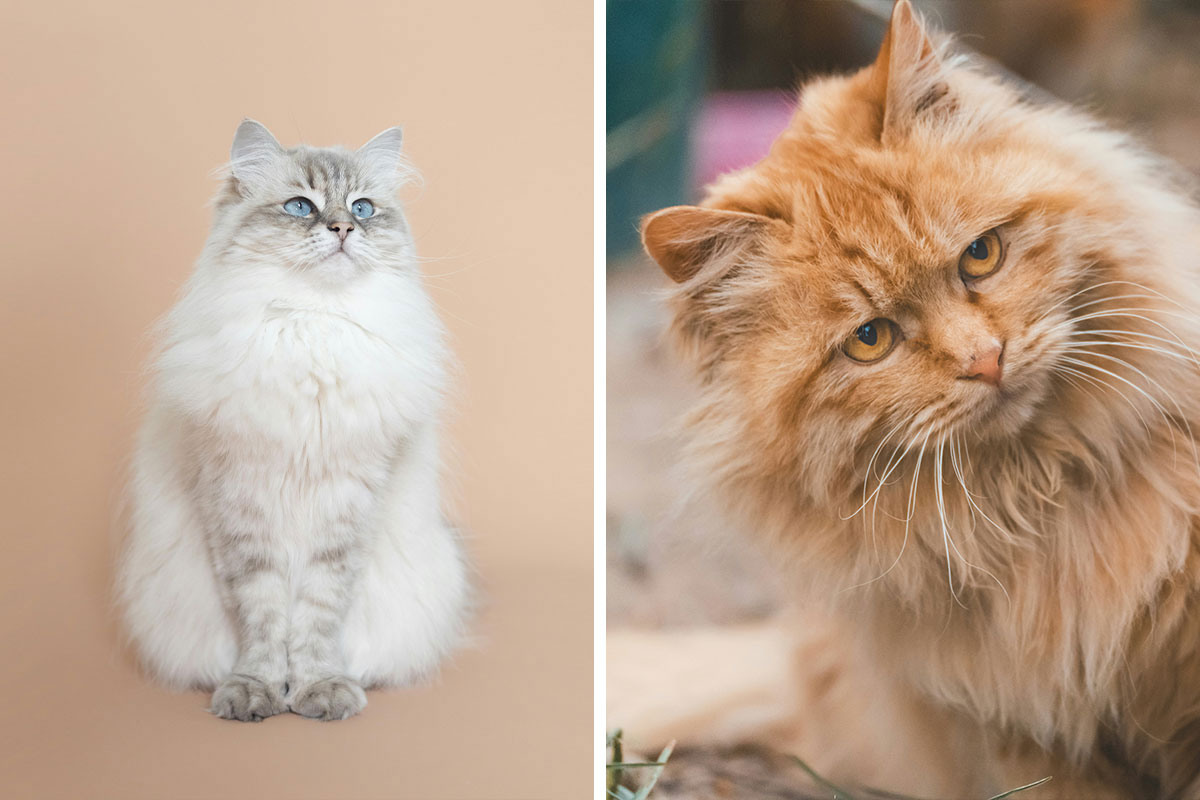
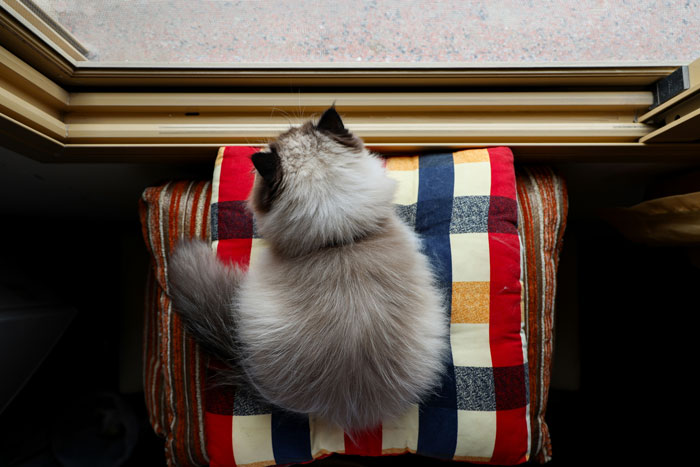 Image credits:
Image credits: 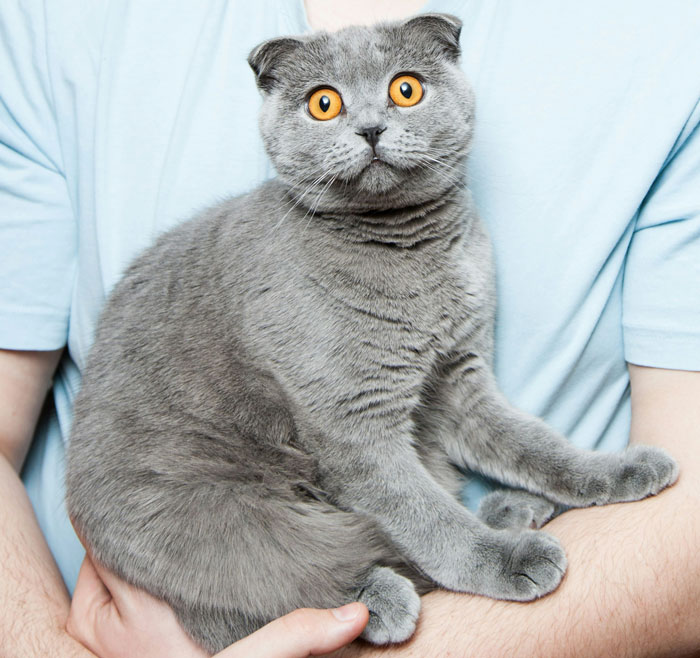 Image credits:
Image credits: 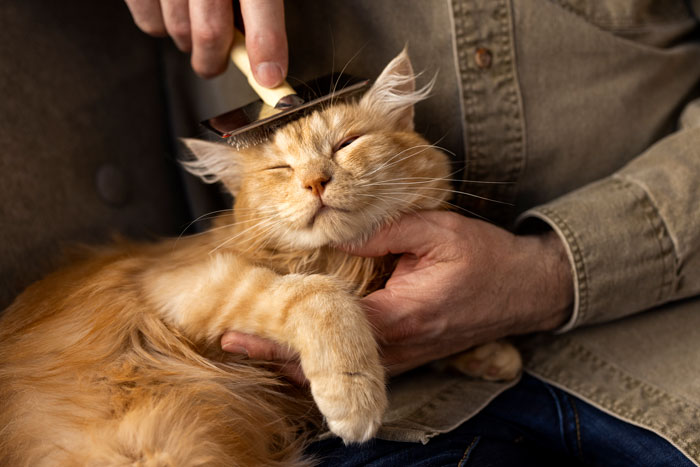 Image credits:
Image credits: 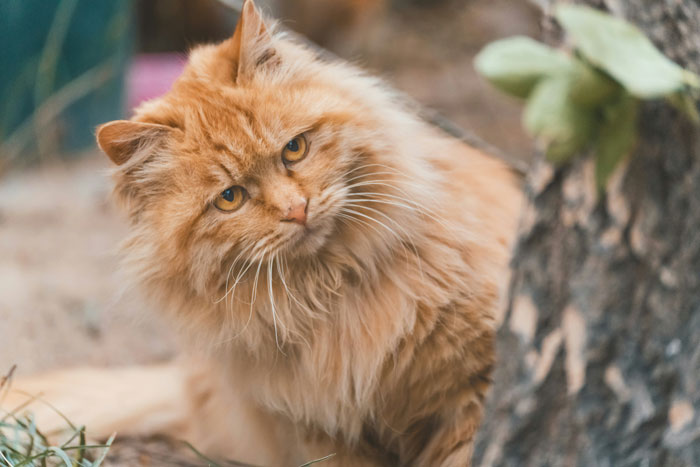 Image credits:
Image credits: 


2
0